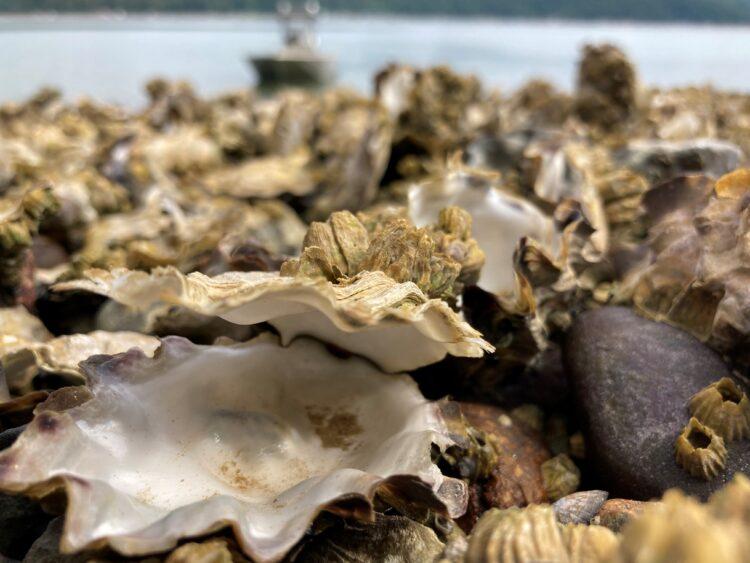It’s hard to forget the excruciating heat that blanketed the Pacific Northwest in late June 2021. Temperatures in Oregon, Washington and British Columbia soared to well above 100 degrees Fahrenheit, with Seattle setting an all-time heat record of 108 degrees on June 28.

During the heat wave, also called a heat dome, scientists and community members alike noticed a disturbing uptick of dying and dead shellfish on some beaches in Washington and British Columbia, both in the Salish Sea and along the outer coast. The observers quickly realized they were living through an unprecedented event and they organized to document the shellfish die-offs as they happened in real time.
The research team leveraged existing collaborations across tribes, state and federal agencies, academia and nonprofits. They devised a simple survey and five-point rating system (1 = much worse than normal to 5 = much better than normal) and asked participants to provide ratings based on their knowledge of a species in that location. In total, they gathered 203 observations from 108 unique locations, from central British Columbia down to Willapa Bay, Washington.
Joe Williams, front, and Darrell Williams with the Swinomish Indian Tribal Community’s Fisheries Department dig clams on a beach in Skagit Bay as part of a survey that is conducted to estimate clam biomass.Northwest Indian Fisheries Commission
“The strength of this study and what it really highlights is the value of local knowledge and also the importance of understanding natural history,” said co-author P. Sean McDonald, a UW associate teaching professor in environmental studies and aquatic and fishery sciences. “This is the first step and a snapshot, if you will, of what shellfish experienced on the beaches during the heat wave.”
Perhaps most surprisingly, the researchers noticed interesting patterns in survival rates among shellfish on the same beach. In some locations, shellfish in the path of freshwater runoff on one section of beach survived, while others just a few miles away perished. If a tree hung over part of a beach and shaded the sand, those shellfish generally made it while others didn’t. Co-author Julie Barber, senior shellfish biologist with the Swinomish Indian Tribal Community, remembers seeing those patterns while walking the beaches of Skagit Bay and, in some locations, being surrounded by dead cockles in every direction.
“Once the effects of the heat wave started to become apparent, the collaboration that emerged was amazing as managers and scientists worked quickly to put together a rapid response to capture information,” said co-author Camille Speck, Puget Sound intertidal bivalve manager for Washington Department of Fish and Wildlife. “We still have so much to learn about the effects of the heat wave on Salish Sea marine ecosystems, and more work to do as managers to prepare for the next one and develop informed responses. These conversations are happening now, and it is our hope that we will be better prepared for whatever comes next.”
Sources:
UW NEWS
Provided by the IKCEST Disaster Risk Reduction Knowledge Service System
Comment list ( 0 )
